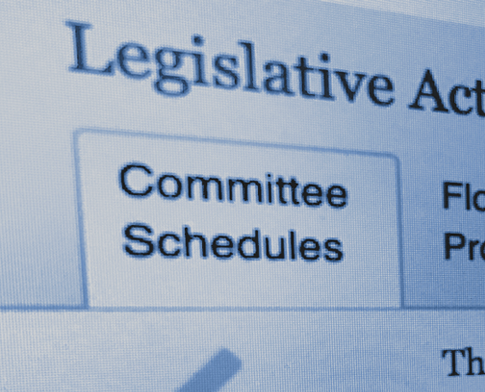Trade Update (December 22)
Congress Clears FY 2020 Spending Bill, Awaits President’s Signature
The Senate cleared two minibuses on Thursday, effectively ending any chance of a government shutdown this year. President Trump has until midnight on Friday (Dec. 20) to sign the nearly $1.4 trillion package. The Senate voted 71-23 on a non-defense package that approved funding for departments like Education, Transportation, Agriculture, Labor, Energy, HHS, and HUD. They also approved a package to fund the Pentagon and departments of Homeland Security, Commerce, Treasury, and Justice by a vote of 81-11. The threat of a year-long continuing resolution (CR) was enough to get top appropriators together to find compromise on a host of issues. Senate Majority Leader Mitch McConnell (R-KY) echoed just that by, essentially, saying that full-year funding beats drifting from CR to CR. Under the two spending bills expected to become law by week’s end, defense funding will be hiked by $22 billion over the next nine months, while another $27 billion in extra funding will be spread among the nation’s non-defense agencies. Because of the budget deal Trump signed in August, federal funding limits will be even higher for the fiscal year that begins in October. Those fiscal 2021 caps allow an extra $2.5 billion for the military and another $2.5 billion bump for non-defense programs.[1] The Department of Commerce will receive $15.2 billion in overall discretionary funding, an increase of $3.81 billion above the FY 2019 enacted level and $2.75 billion above the president’s budget request.
House Passes USMCA
After more than a year of negotiations between the Trump administration and House Democrats, the United States-Canada-Mexico Agreement (USMCA) finally crossed the finish line. The House passed the trade deal to replace the North American Free Trade Agreement (NAFTA) in an overwhelming bipartisan vote of 385-41. The bill now sits in the Senate where it will assuredly pass, although McConnell said his chamber will not take it up for vote until after the impeachment trial. And while the bill’s passage in the House completes the toughest hurdle for implementing USMCA, House Speaker Nancy Pelosi (D-CA) may delay sending over the articles of impeachment until negotiations for the trial’s procedures can be shored. That means USMCA may not see a vote until February or even March, depending on how long those negotiations take. Nevertheless, both the administration and House Democrats are touting USMCA as a major victory. Many moderate House Democrats have been lobbying Pelosi to take the bill up for vote to deliver a legislative victory for their constituents. Meanwhile, the bill’s passage gives a significant victory to President Trump, who’s heavily criticized NAFTA since his presidential campaign. The deal marks his largest legislative victory since the Tax Cuts and Jobs Act of 2017 (TCJA). Pelosi, however, made sure to state that the deal U.S. Trade Representative (USTR) Robert Lighthizer and the administration sent more than a year ago was not the same as this deal. “This isn’t about him (Trump),” Pelosi said. “It’s about American workers.” House Republicans routinely criticized the speaker for her refusal to take up the bill throughout 2019. Minority Leader Kevin McCarthy (R-CA) welcomed the vote but called it a year late. Democrats remain adamant that the delay was necessary as they continually sought changes to provisions related to labor enforcement, prescription drug pricing, enforcement, and intellectual property enforcement. House Energy and Commerce Chairman Frank Pallone (D-NJ) was a notable “no” vote and said in a statement, “I voted against the original NAFTA because it was a bad deal for American workers. There has been a steep decline in U.S. manufacturing jobs over the past 25 years as a result of NAFTA’s lax enforcement rules that encouraged corporations to outsource jobs to Mexico. Unfortunately, NAFTA 2.0 does little to improve upon this corporate giveaway that fails to prioritize workers.” Senator Pat Toomey (R-PA) criticized the deal over its auto rules-of-origin and called for the deal to be stripped of Trade Promotion Authority (TPA) protection against a filibuster when it goes to the Senate because the Trump administration did not follow the process laid out in that law for submitting the deal to Congress. He also voiced skepticism over the alleged creation of 176,000 new jobs that the administration says will culminate from the deal’s implementation. On Friday (Dec. 20) afternoon, the Senate Finance Committee announced it will markup USMCA on Jan. 7, the day Congress returns from Holiday recess. Finance Chairman Chuck Grassley (R-IA) said it’s the first step in moving the bill toward ratification. Senate Finance must report the USMCA implementing legislation out of committee before it can be sent to the floor for an up-or-down vote with no amendments.[2]
Latest on U.S.-China Trade Deal
While USMCA serves as the major trade achievement in 2019, there are still other deals to negotiate in 2020, most notably with China, the United Kingdom (UK), and the European Union (EU). President Trump said Friday (Dec. 20) that he spoke with Chinese President Xi Xinping about the “Phase One” trade deal and said a signing is being arranged. “Had a very good talk with President Xi of China concerning our giant Trade Deal. China has already started large scale purchase of agricultural product & more,” Trump tweeted Friday morning. “Formal signing being arranged.” Lighthizer said the U.S. secured concessions from China on structural changes related to intellectual property, currency, and other outstanding issues. Treasury Secretary Steve Mnuchin said the deal is going through “technical, legal scrub” and will be released in January.
2020: UK and EU Trade Priorities for U.S.
On Tuesday (Dec. 17), Lighthizer said the administration will shift its focus toward trade relations with the UK and EU in 2020. The U.S. cannot negotiate with the UK until its “Brexit” from the EU on Jan. 31. The trade deficit between the EU and the U.S., which President Trump has been vehement about, is one of the key objectives to form a bilateral trade deal with the European body. “You can’t get the global trade deficit down without getting the trade deficit down with Europe, at least significantly. So that’s a really important focus for us,” Lighthizer said. “On the other hand, we have a very good relationship with Europe. I don’t want to make it look all negative. There’s a lot of trade between the two bodies that’s very positive.”[3] The U.S. has imposed retaliatory tariffs on some $7.5 billion of aircraft and consumer goods from the EU in the past months, further signaling doubt for a compromise. Ligthizer said on Tuesday (Dec. 17) that the U.S. could increase those duties but hopes to reach a deal with the EU instead. USTR issued a request for comment on whether to remove any goods from the list, remove goods and replace them with other products, or raise duties up to 100 percent on goods already tariffed. The comment period for that notice, which can be found here, closes on Jan. 13, 2020.
References
1] Schlotes, Jennifer. Emma, Caitlin. “Congress send bipartisan $1.4T spending deal to Trump, ending shutdown threat.” Politico Pro. 19. Dec. 2019. https://subscriber.politicopro.com/article/2019/12/congress-sends-bipartisan-14t-spending-deal-to-trump-ending-shutdown-threat-1852032
[2] Rodriguez, Sabrina. “Senate Finance to mark up USMCA on Jan. 7.” Politico Pro. 20 Dec. 2019. https://subscriber.politicopro.com/article/2019/12/senate-finance-to-mark-up-usmca-on-jan-7-3975280
[3] Palmer, Doug. “Lighthizer: U.K., EU trade are priorities for 2020.” Politico Pro. 17 Dec. 2019. https://subscriber.politicopro.com/article/2019/12/lighthizer-uk-eu-trade-are-priorities-for-2020-3975124
HOUSE.GOV
The Week Ahead
For the main events of the next week and more, go straight to the key events on the house.gov website.
SENATE.GOV
The Week Ahead
For the main events of the next week and more, go straight to the key events on the senate.gov website.


